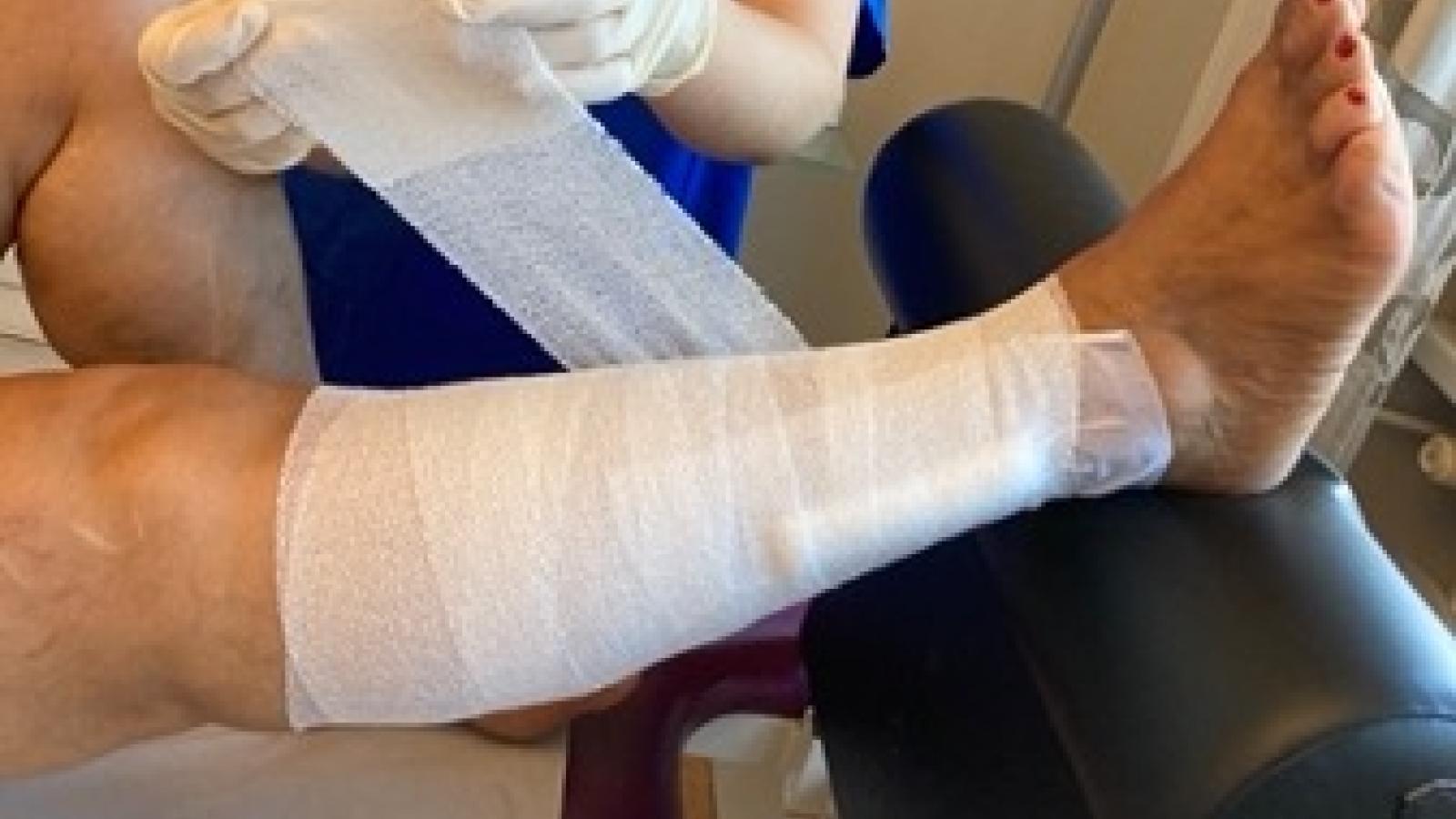Therapies at the vein centre
- Minimally invasive endovenous therapy procedures (e.g. laser therapy)
- Miniphlebectomy
- Ultrasound-guided foam sclerotherapy
- Microsclerotherapy
- Compression treatment
Minimally invasive endovenous therapy procedures (e.g. laser therapy)
Whereas in the past, the only treatment options for varicose veins requiring treatment were permanent compression therapy or (open) surgical therapy with crossectomy and stripping, various new minimally invasive, so-called endovenous procedures have been developed in recent years since the introduction of laser and radiofrequency technology, which replace traditional surgery.
In the outpatient endovenous laser or radiofablation procedure ClosureFast (Venefit®), the diseased veins are switched off via a catheter using heat and then broken down by the body's own processes. The endovenous procedures are carried out in our practice on an outpatient basis under local anaesthesia (so-called tumescent anaesthesia).
You benefit from the many years of experience of our treatment team.
PD Dr Dr Schmidt was one of the first in Switzerland to use the method back in 2006 at Zurich University Hospital and can look back on 30 years of experience in the treatment of varicose veins. This is why, for example, the MediX Guideline "Varicosis" was written by him.
PD Dr Schmidt-Weitmann has also been using minimally invasive treatment methods as a certified phlebologist since 2018 and has treated several hundred patients with this innovative technique to their complete satisfaction during this time.
The costs of these modern endovenous thermal therapies have been covered by compulsory health insurance since 2016.
Advantages of the new, minimally invasive procedures:
- No anaesthesia, no spinal anaesthesia
- No hospitalisation
- No major incisions, no scars, minimal blood loss
- No thread removal necessary
- Short-term incapacity to work
Scientific studies show that the results are at least equal to those of conventional open surgery with less post-operative pain and complications. Endovenous procedures have therefore been included in national and international guidelines as the treatment of choice.
Miniphlebectomy
This involves the removal of diseased side branches via tiny skin incisions (approx. 2 mm) under local anaesthetic, often in combination with other methods (laser or radiofrequency). This therapy can be carried out on an outpatient basis in the practice.
Ultrasound-guided foam sclerotherapy

In suitable patients, varicose veins can be treated using foam sclerotherapy. A sclerosing agent (usually an alcoholic solution in the form of a foam) is injected painlessly into the dilated vein under ultrasound guidance. The body breaks down the veins treated in this way over the course of weeks to months.
Microsclerotherapy
Superficial, small bluish veins at skin level (spider veins and reticular veins) are often perceived as annoying, but are usually only of cosmetic significance. In 20% of patients with pronounced spider vein varicosis, there are varicose veins that are not visible from the outside. We recommend that our patients undergo a vascular ultrasound/duplex sonography once before any planned treatment of spider veins in order to rule out varicosis requiring treatment.
The spider veins are treated in 30-minute sessions using microsclerotherapy. A liquid sclerosing agent (Aethoxysklerol or Chromalaun) is injected into the spider veins. After 4-8 weeks (depending on the size), the spider veins are dissolved and the desired result is achieved. As this is a cosmetic treatment, the costs are not covered by health insurance.
Compression treatment

Compression treatment supports venous blood circulation on the way back to the heart and stimulates the lymphatic system. Various types of therapy can be used for this purpose. We offer comprehensive advice on the possibilities of compression therapy from our specialists and our trained staff.
IPC (intermittent pneumatic compression)
IPC therapy is used for various forms of oedema (phleboedema, lymphoedema, lipoedema) and is a good complement to manual lymphatic drainage. The compression device consists of two cuffs which are applied to the legs. The legs are drained by 4-5 air chambers in each cuff through gentle, dynamic compression for approx. 30 minutes. This process stimulates the removal of lymph and blood circulation. If the IPC therapy is well tolerated, it is recommended that it be applied at regular intervals.
Compression stocking advice
Compression stockings exert constant, controlled pressure on the legs. This compresses the vein walls and supports and improves the blood flow towards the heart. Compression stockings are categorised into different compression classes, with class I having the lightest compression and class IV the strongest. Compression stockings in class II and above are classed as medical compression therapy, require a doctor's prescription and are therefore largely covered by health insurance.
However, the lighter compression class I is also very helpful, e.g. for work-related mild forms of oedema (e.g. standing for long periods in sales) and significantly alleviates the symptoms of congestion. To achieve the desired result, the leg circumferences should be measured precisely and the compression stockings should be replaced every 6 months.
To ensure optimum wearing comfort, we recommend expert advice from our trained staff, who can inform you about the various options and products. You can obtain the ideal compression stocking for you directly from our practice.